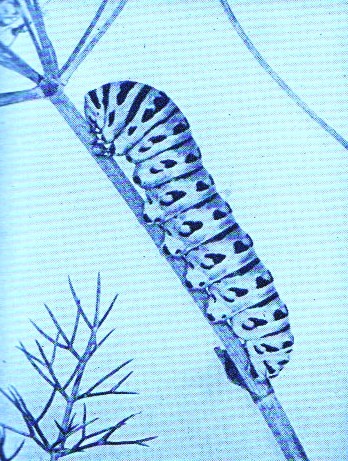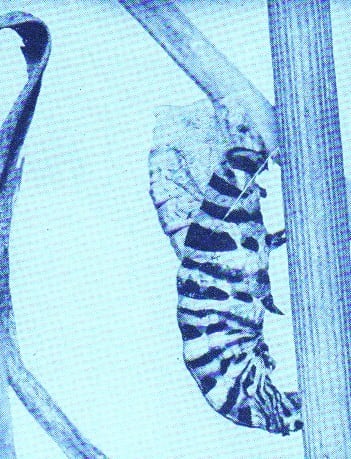- HubPages»
- Education and Science»
- Life Sciences»
- Entomology»
- Insects & Bugs
The Appetite of a Caterpillar

Sometimes you just don't truly appreciate something for what it is, and more importantly for what it will be in the future. You'd think we all would have learned that in kindergarten when someone read us, Hans Christian Andersen's, Ugly Duckling.
Yet, I must confess there was a time when the sight of one would send me running. Usually, that was because my little brother was chasing me with it.
Then, there was the dreaded chore of having to hand pick caterpillars off Gram's plants that I was most unhappy about being assigned. They were ugly (so I thought) and yucky. Still, I'd have to grow to be an old lady before I understood the miracle of how a butterfly is born and the real beauty found in a caterpillar..
Years ago when I spent a long stretch of time housebound in a wheel chair, I had a lot of time on my hands. I'm not one to accept boredom and am never bored.
I kept myself amused by studying nature in the most intense way I could. The end result were a lot of sketches, and experiments in recreating what I was learning visually while making notes about what I learned in journals.
One of my more serious butterfly studies was that of the Swallowtail butterfly, which is found on all continents except Antarctica. They prefer the more temperate climates and some of the largest members of this butterfly family are found in Australia.
I thought it might be fun today to look at one Mother Nature's picture books and explore visually more than with words, just like we did when we were children.
Let's Start With The Caterpillar's Enormous Appetite

The egg, cemented to the branch of sweet fennel is the size of a large pinhead. It is pale yellow at first, but soon changes to green. Now, because it is so very small and is colored like the plant on which it lies, it cannot easily be detected by predators.

From the egg, is hatched a grub, or caterpillar, with a spiny black coat. First it eats the eggshell. Then, it starts an astonishing career of eating the plant upon which it lives. It gorges until its skin becomes too tight and splits off.

After ten days of eating and shedding its spiny skin, it comes out in a moth green and black skin with orange spots. Now it eats more than before, and casts its skin whenever it becomes too tight. This is the life story of the swallowtail butterfly.

The swallowtail grows a pair of hollow horns, called ejectors. When irritate, the caterpillar throws the fore end of its body from side to side, and protrudes the horns.
From them comes a sharp odor which probably keeps some of its enemies away. Not all caterpillars have this protective weapon.
The Story Of Living Death In A Swallowtail Caterpillar

From a gland in the body it spins out a silken thread, cementing the ends to the stalk of the plant. It ducks into the loop and wriggles until the loop is around the middle of its back. Here it pushes against the thread to test its strength.

It casts its skin for the last time, without disengaging the body from the supporting loop of silken thread. What emerges is no longer a caterpillar but a chrysalis, or pupa. You can see how the skin splits down the back, beginning at the head.

Slowly the chrysalis frees itself from the old caterpillar skin, first the head, then the tip of the abdomen. This is the most difficult moment of all. The tip of the abdomen (called the cremaster) now fastens like an anchor on the stem. The chrysalis is almost ready to begin its period of "living death."

The chrysalis at last hangs from the plant supported by the loop of silk and the tip. It is soft and helpless, gray in color, and as it hangs, looks like a dead leaf. The outside is called a pupal case. This gradually dries out. The pupae of moths rest snugly in cocoons, while butterfly pupae do not have cocoons.
Freedom -- A Swallowtail Butterfly Is At Last Born!

The chrysalis seems to be dead, but inside the shall something very wonderful is happening. The internal parts soften to a kind of "soup," from which is formed the body of a butterfly. Then the pupal case cracks and the butterfly pushes up one end.

Slowly the butterfly works itself out of its cradle. Here it is almost free from the pupal case. All six legs are out. The wings and abdomen are still imprisoned and the insect must fight to free them. It is a difficult moment for the new insect.

The insect is free, but soft and damp and weak. After a short rest, the butterfly feebly moves its wings until they unfold. It also flexes and coils its tongue in preparation for the liquid meal of nectar. It has lost all memory of its former life as a greedy caterpillar.

Only two hours have passed since it freed itself from the old pupal case. The perfect butterfly is ready for a trial flight, its body hardened, its tongue coiled up in place, its wings expanded and beautiful. The butterfly is called an imago, a true picture of its own perfection.
Life Cycle of Pipevine Swallow Tail Butterfly
If You'd Like To Know More!
- Black swallowtail
A Field Guide to Common Texas Insects, Bastiaan Drees and John Jackman. - Hans Christian Andersen: The Ugly Duckling
- Raise a Black Swallowtail Butterfly - Fascinating stages.....Easy instructions
Raise a Black Swallowtail Butterfly - Follow each phase......including beautiful photos. - Schaus Swallowtail Butterfly Butterfly Conservation Initiative
The Butterfly Conservation Initiative is dedicated to the conservation of threatened, endangered, and vulnerable North American butterflies and the habitats that sustain them, with a focus on recovery, research, and education. - Swallowtail
A Field Guide to Common Texas Insects, Bastiaan Drees and John Jackman. - The Butterfly Lab
Swallowtail butterfly caterpillars








